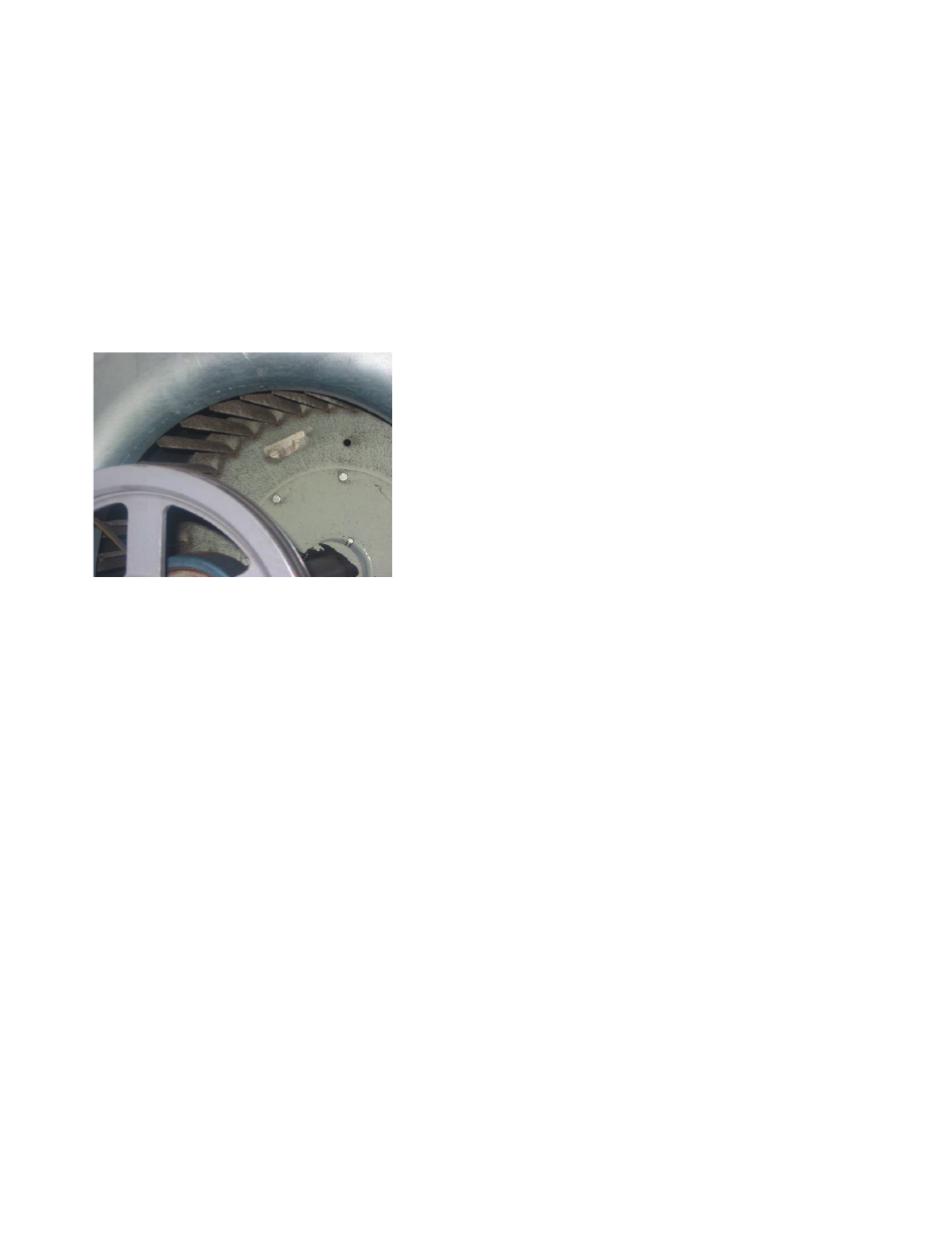Retrotec USACE User Manual
Page 163

Appendix D D33
D.2.3.5 Excessive Air Flow (Ineffi ciency)
The quantity of supply air fl ow in an HVAC system can be reduced as comfort
conditions are achieved. The reduction of air fl ow reduces the fan motor horse-
power according to the cube of the reduction of supply air fl ow. Therefore, as
supply air fl ow is reduced, energy usage can be reduced dramatically. This can
be accomplished by modifying the HVAC control system to reduce air supply
by the use of variable frequency drives (VFD). If the air fl ow is reduced using
modulating air dampers or by using inlet vanes (vortex dampers), the energy
savings is not as great.
D.2.3.6 Use of Ineffi cient Fan
Figure D55. Backward inclined fan.
The most common type of HVAC fan is the forward-curved fan. This fan is
sometimes referred to as the squirrel cage fan and is the least energy-effi cient
type used in common HVAC systems. The advantage of the forward-curved
fan is that it can handle high volumes of air at relatively low static pressure. A
more energy-effi cient design is the backward inclined or air foil fan (Figure
D55). These fans can produce air fl ows at an energy savings of 17–33%. An-
other advantage of the backward-inclined or airfoil fan is the nonoverloading
horsepower curve of these fans. This means that these fans are inherently more
stable than the forward-curved type. During new or replacement installation,
select backward-inclined or airfoil fans.
D.2.3.7 No Use of the Water Condensed through the Air-
Conditioning Process (Waste)
The air conditioning process produces condensate water from the return air,
which is typically discharged to the sanitary sewer. This water can be collected
from the air handling units and used for plant irrigation, cooling tower makeup,
and so forth.